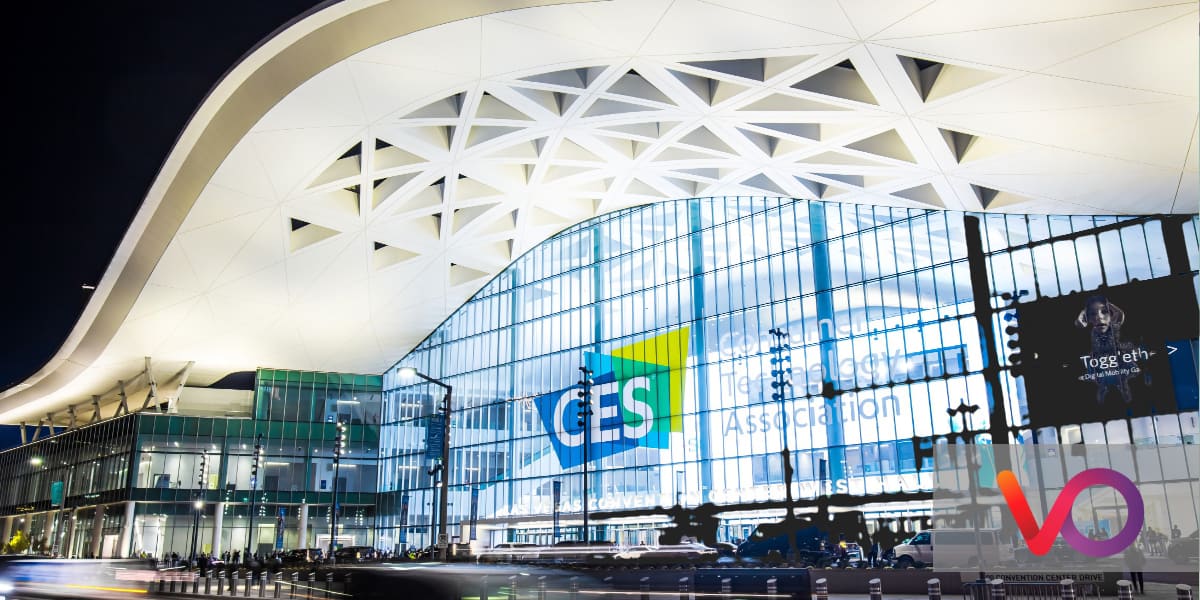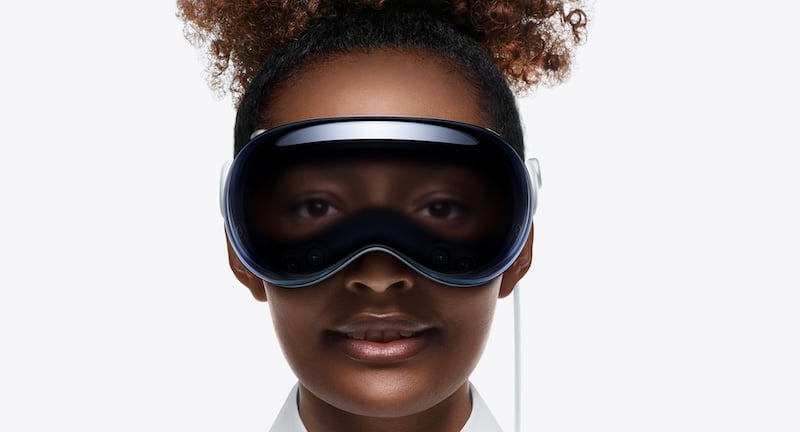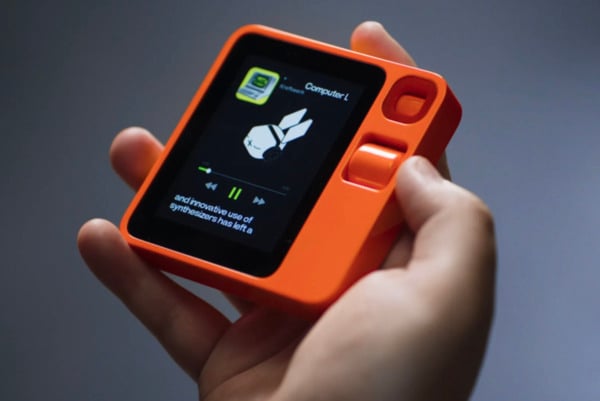
While it might not be the largest consumer electronics show of the year anymore, that accolade has been taken by GITEX in Dubai, which takes place every October, but CES 2024 remains the most influential. Every year a huge number of established businesses, global tech giants, and hopeful start-ups all descend on Las Vegas to showcase a bewildering array of new gadgets and technologies.
130,000 people attended the show, and this year, the main talking points were everything from a cheap and cheerful AI interface to an $11,000 smart toilet, with everything from ever-smarter cars, household robots, and a new generation of television sets in between.
But what are the important themes that we can draw out from the show? And what do they tell us about the way the video industry will perhaps evolve over the next few years? These are our 4 key takeaways…
The 4 key themes of CES 2024
1. AI is everywhere
2024 will be the year that AI migrates from specific use cases to, well, everything. All the TV set manufacturers were talking about the power of their new AI chips to provide higher-quality pictures (more on that below), and the technology is being folded into a huge range of consumer durables.
These range from where it makes perfect sense, such as binoculars that can identify over 9000 species of birds for you, to those where it feels a bit more marginal, such as a cat flap that will detect if your pet is trying to bring a dead mouse or bird into the house.
The point is that we have rapidly hit a stage where consumers expect AI to be present in electronic gadgets. Technology can no longer be ‘dumb’; it must actively assist them. And this attitude will cover everything from the cars they drive to the TV services they watch.
2. The televisions of the future
CES always features a lot of new television sets from the world’s top manufacturers. This year was no exception, and, as already mentioned, most were talking about the power of new AI chips in their latest sets. These are perhaps more at the high-end for now, but will no doubt trickle down to the mainstream devices soon.
One of the key consequences of this is a resurgence of interest in 8K as a display format. The latest chips do a very good job of upgrading 4K to 8K resolution (and Full HD to 4K), meaning that the lack of native 8K content is much less of a problem than it used to be. With 4K increasing in popularity for premium content and live sports and events, there is now plenty to watch. In terms of production and distribution, this means Ultra HD 4K will probably be the upper limit now for some time to come.
OLED screens are becoming more and more popular. They are slowly getting bigger and brighter, have new glare-free treatments, and this year, they also became transparent, with more than one see-through display debuting at the show.
Probably the best and perhaps the most talked-about device at the whole show was the LG Signature OLED T. This is a 77-inch transparent TV that effectively looks like a sheet of glass, with a black screen that can be lowered behind it for dedicated viewing. And if that was not impressive enough, it is also wireless, using the company’s Zero Connect Box for all cabling except power.
Consumers want the choice of watching on as many screens as possible (and as numerous automobile demonstrations showed, that’s also going to mean in-car entertainment in the near future). But the era of the big family screen in the living room is by no means over. In fact, it’s perhaps now providing more compelling and better experiences than ever.
3. The return of augmented reality
Unusually, one of the biggest stories of the show wasn’t actually at the show. Apple, which tends not to exhibit at CES, chose the opening day to announce that its Apple Vision Pro augmented/mixed reality headset would launch in the US on February 2.
This is a really intriguing device. It’s certainly expensive at $3500 but features a lot of high-end technology, including two 4K screens and some of the outstanding usability innovations that Apple tends to excel at, such as projecting live video of your actual eyes onto a front-facing screen so your face is not hidden while wearing the unit.

It also introduces Apple Immersive Video, a new entertainment format pioneered by Apple that puts users inside the action with 180-degree, three-dimensional 8K recordings captured with 3D Spatial Audio. And Apple also says you can, of course, watch normal video content on it on a virtual screen as big as you like. Think of it as your own personal IMAX.
Will Apple Vision Pro be successful? Apple doesn’t like to refer to augmented/mixed reality; instead, it is referring to the AVP as a ‘spatial computing’ device, which rather points to a corporate market in the near term at least (though maybe with a cheaper Apple Vision unit to come).
Nevertheless, if any company can invigorate what has become a rather static market, it is Apple. There were plenty of less expensive (and admittedly less capable) rivals breaking cover at CES itself. We have come a long way since the days of the Google Glass project, which shuttered in 2015, and a new wave of AR technology is an intriguing prospect. Who knows, it could even lead to a resurgence of interest in VR again…
4. The interface question
A lot of effort is going into working out how we interact with the next generation of technology, especially generative AI. Voice recognition means that we no longer need the keyboard as an input device, and designers are coming up with a wide variety of new solutions that take advantage of this.
More than one company was showing wheeled robot AI assistants — think a souped-up rolling Siri or Alexa, and you're in the right area; and The Humane AI Pin — a brooch with a projector, essentially — created a stir at the tail end of last year. But one of the standouts at the show was undoubtedly the $199 Rabbit r1.

It might look like a children’s toy, but Rabbit reckons this sort of device will eventually replace your phone. As The Verge describes, “Rather than a ChatGPT-like large language model, Rabbit says Rabbit OS is based on a “Large Action Model,” and the best way I can describe it is as a sort of universal controller for apps. “We wanted to find a universal solution just like large language models,” says Jesse Lyu, Rabbit CEO. “How can we find a universal solution to actually trigger our services, regardless of whether you’re a website or an app or whatever platform or desktop.”
The Rabbit r1 sold out its initial batch of 10,000 units and is now rapidly filling its fourth. The idea is that using the device you can control music, buy groceries, send messages, videoconference and more, all through a single interface. Instead of a screen full of apps, you have an AI assistant that operates them for you through the one UI.
It’s a neat idea, and while few people really think that the Rabbit r1 will be the next iPhone-class disruptor, it’s a reminder that the smartphone’s place in our hearts and our pockets is not guaranteed as the AI era gains momentum.
For the moment, the way that we control video viewing via a remote and increasingly using voice control seems fairly locked in. But that’s not to say that it will remain that way as our devices become ever smarter and ever more understanding of our needs. By the time we get to CES 2025, it may well all have changed.

